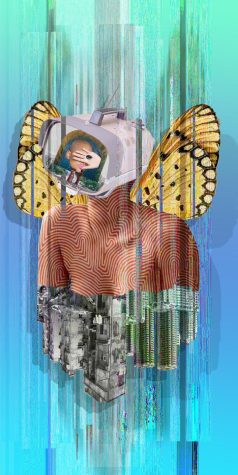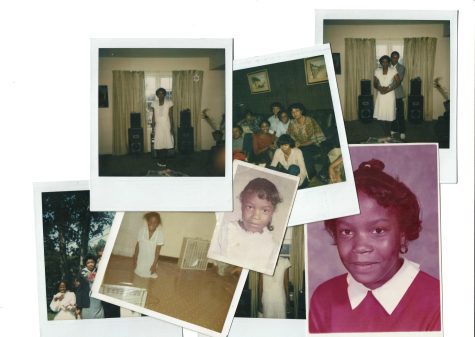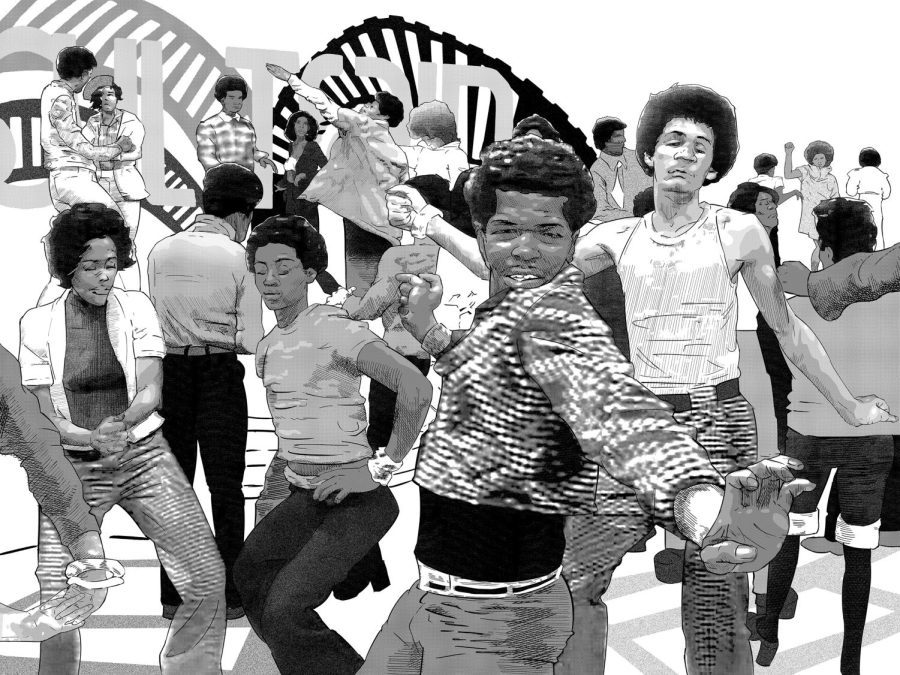Upcoming Krannert Art Museum exhibition to explore Blackness
Photo Courtesy of Patrick Earl Hammie/Krannert Art Museum
Patrick Earl Hammie’s giclee print, “44.06” displays a dancing black community representing Black collectivity within the piece. Hammie’s prints alongside art from three other faculty artists from the School of Art & Design will be presented to enjoy with food at its exhibition at the Krannert Art Museum on Sept. 24.
Aug 5, 2022
Nekita Thomas, one of four faculty from the School of Art & Design whose work will be featured in the upcoming Krannert Art Museum art exhibition “Black on Black on Black on Black,” said she wants viewers to walk out with a new perspective on Blackness.
“Blackness is multidimensional, period,” Thomas said. “There is no one frame you can put on it. Across time, space, music, art and design, there is no one right way to have a Black experience.”
The exhibition, which opens Sept. 24, will explore Black identity and collectivity, among other things, through the lens of the Black Quantum Future philosophy. The exhibition will feature art and design pieces from Nekita Thomas, Blair Ebony Smith, Patrick Earl Hammie and Stacey Robinson.

Hammie said that one aspect that will help the exhibition is that none of the artists have to individually represent Black identity in its entirety.
“All of us are on different kinds of levels, maybe emphasizing different elements, so we don’t all have to carry that in every single work throughout the whole show,” Hammie said. “We support each other.”
Get The Daily Illini in your inbox!
Smith said every piece in the exhibition carries an aspect of Black experience.
“Each piece of art or design that we bring to the show is very based on lived experience,” Smith said. “We’re exploring Black identity, healing, speculation, innovation and education. That’s us, it’s the lived things we do.”
Robinson said that as artists, the four of them are able to physically portray these aspects of Blackness.
“These things, among others, are things that Black people are constantly dealing with,” Robinson said. “The beautiful thing about the four of us is that we are artists. We can take what’s in our hearts and in our minds and make that a physical thing.”
The artists said the exhibition is for anyone who wants to see it and they want it to start conversations.
In addition to the audience, Smith said the exhibition was for themselves.
“First and foremost, I think this show is for us,” Smith said. “To be able to have space, resources, time and money to make this work. Being able to do that, we’re able to reach Black students and Black locals, and people who might relate to it with their own experience.”

Hammie said that the collaboration between the four of them for this exhibition has made them closer.
“The show itself is an artwork that we all worked on together,” Hammie said. “Intellectually, we developed it together, we’ve had the pleasure of having so many meetings together and we get to know each other differently and more intimately as creative people.”
Thomas said that while the four of them are all faculty, this exhibition is their opportunity to be makers.
“You have us as makers, but you also have us as faculty, and I totally took this as an opportunity to focus on myself as a maker, not faculty,” Thomas said. “And I totally embraced it for the show and found it as my inspiration.”
The artists all have their own sources of inspiration, but they all share the same inspiration of the experiences they live through.
“Nowadays, it’s just opening my eyes and being Black,” Hammie said. “I look at the news and social media, and I can’t not speak, but I don’t have the time or the ability to go out and be in the streets, but I do what I do in the studio and the classroom.”
Smith said that while the exhibition will be lively and joyful, it will also cover serious topics.
“Funk and jazz, joyful music is going to be a part of it, but it’s also about how I’m remembering my ancestors, my parents who are not here,” Smith said. “There are a lot of different ways that loss and pain and joy come out in our installations, and I want all of that to be felt.”
Stacey echoed this, saying that the art is to be taken seriously.
“Come hungry, because the food is going to be incredible, the beats are going to be incredible, it’s going to be an amazing experience, but don’t take the art for a joke,” Stacey said. “Because it’s not.”






